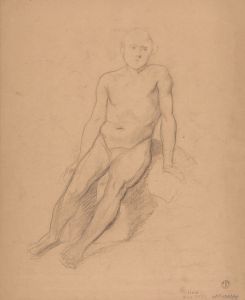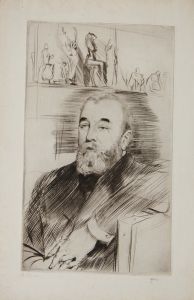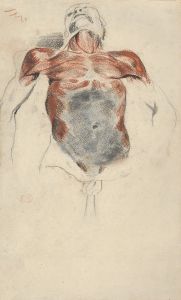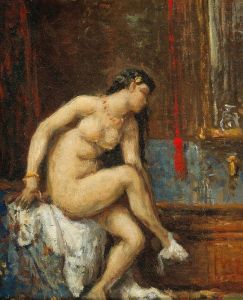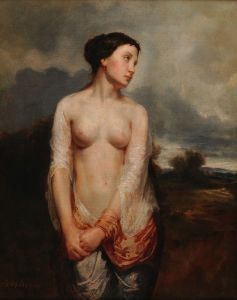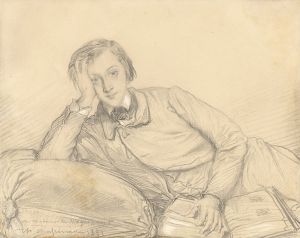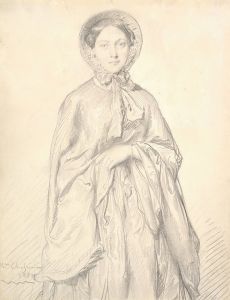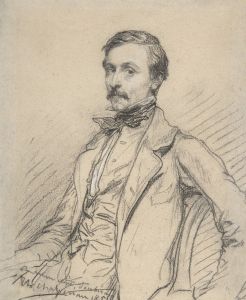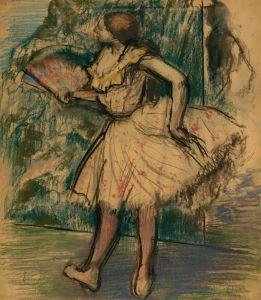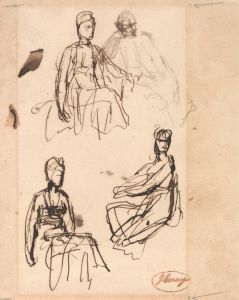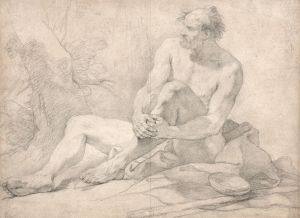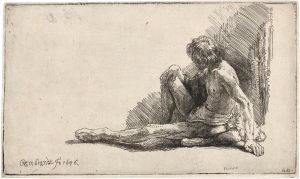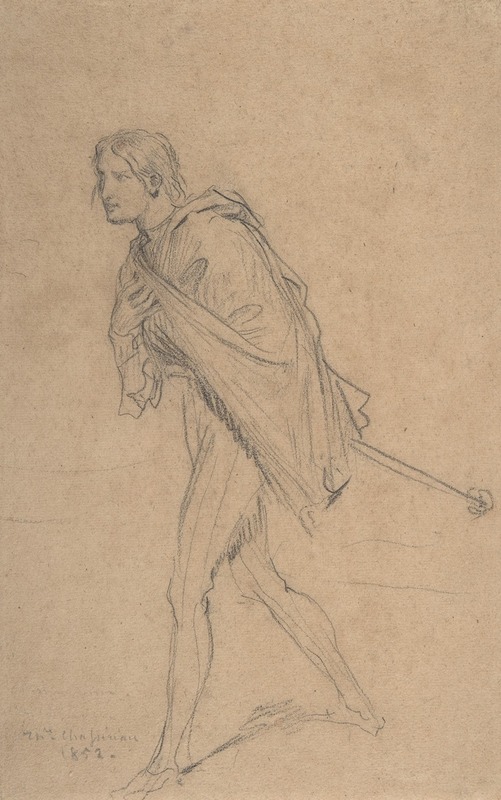
Cassio Bowing
A hand-painted replica of Théodore Chassériau’s masterpiece Cassio Bowing, meticulously crafted by professional artists to capture the true essence of the original. Each piece is created with museum-quality canvas and rare mineral pigments, carefully painted by experienced artists with delicate brushstrokes and rich, layered colors to perfectly recreate the texture of the original artwork. Unlike machine-printed reproductions, this hand-painted version brings the painting to life, infused with the artist’s emotions and skill in every stroke. Whether for personal collection or home decoration, it instantly elevates the artistic atmosphere of any space.
"Cassio Bowing to Desdemona" is an oil painting created by the French artist Théodore Chassériau in 1850. Chassériau, born in 1819, was a notable painter of the Romantic era, known for his portraits, historical, and religious subjects. This particular work is inspired by William Shakespeare's play "Othello," specifically a scene from Act II, Scene I, where Cassio greets Desdemona with reverence and admiration.
The painting captures the moment when Cassio, a loyal lieutenant to Othello, bows to Desdemona, Othello's wife, as a gesture of respect and admiration. Chassériau's depiction is rich in detail and emotion, reflecting the complex relationships and themes of honor, jealousy, and tragedy that are central to Shakespeare's play. The artist's use of color, light, and composition highlights the dramatic tension and the characters' inner emotions.
In "Cassio Bowing to Desdemona," Chassériau employs a Romantic style characterized by its emphasis on emotion and individualism. The figures are rendered with a sense of grace and dignity, and the artist's skillful use of chiaroscuro (the contrast between light and dark) enhances the dramatic effect of the scene. Desdemona is portrayed with a serene and gentle expression, while Cassio's posture and gaze convey his deep respect and admiration for her.
The painting is notable for its attention to detail, particularly in the depiction of the characters' clothing and the setting. Chassériau's meticulous rendering of the textures and patterns of the fabrics, as well as the architectural elements in the background, adds to the overall richness and realism of the work. The artist's ability to capture the subtleties of human expression and interaction is evident in the way he portrays the characters' emotions and the dynamics of their relationship.
Théodore Chassériau was a student of Jean-Auguste-Dominique Ingres, and his work reflects the influence of his teacher's neoclassical style, as well as the Romantic movement's focus on emotion and drama. Chassériau's ability to blend these influences is evident in "Cassio Bowing to Desdemona," where the classical composition and attention to detail are combined with a Romantic sensibility.
The painting is part of the collection at the Louvre Museum in Paris, where it is displayed alongside other works by Chassériau and his contemporaries. It is considered one of Chassériau's masterpieces and a significant example of 19th-century French Romantic painting. The work continues to be admired for its artistic merit and its ability to convey the timeless themes of Shakespeare's play through the medium of visual art.
Overall, "Cassio Bowing to Desdemona" by Théodore Chassériau is a remarkable painting that captures a poignant moment from Shakespeare's "Othello" with emotional depth and artistic skill. It stands as a testament to Chassériau's talent and his ability to bring literary scenes to life through his art.





